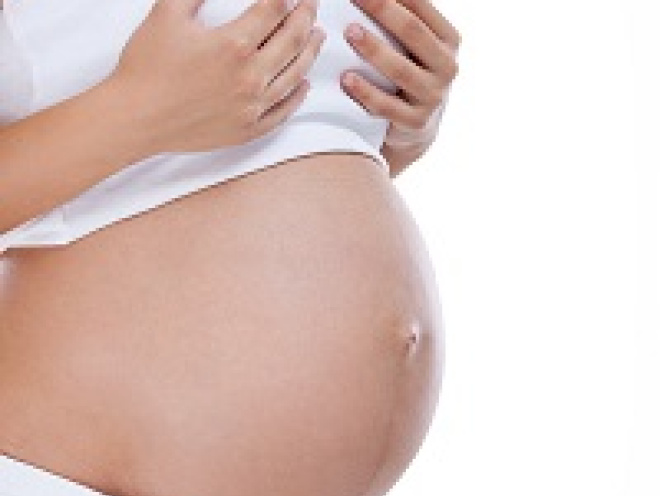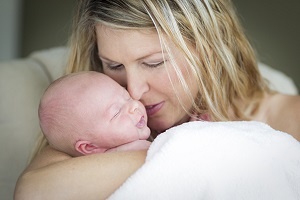Having a baby causes a lot of changes to your body, including how your breasts look or feel and what they’re producing. Here’s what to expect
Many women are worried about the changes that having a baby will cause their breasts.
Will your breasts be sore? Saggy? Will they get too full with milk? And what is mastitis? Here’s some information about your post-baby breasts…
Sagging
Many women are concerned about what their breasts will look like after having a baby. Some women say that the shape and look of their breasts changes after they give birth. The main changes women mention is that their breasts become bigger and less firm, but these changes are caused by pregnancy rather than breastfeeding (Piscane and Continisio, 2004).
Women in one study who had formula-fed their babies reported similar changes to those who breastfed (Rinker et al, 2008). Being older, weighing more, the number of pregnancies and having a larger pre-pregnancy bra size all affected whether breasts sagged more after birth (Rinker et al, 2008). Breasts may be larger during the first few months of breastfeeding, but most return to pre-pregnancy size after breastfeeding stops (Leonard, 2019).
Milky breasts
Breasts start producing milk a few days after birth; they produce a substance called colostrum for the first few days. Milk production may cause breasts to feel heavy, full and tender. This happens whether or not you have chosen to breastfeed.
Once you’re producing milk, you might have breastmilk leaking from your nipples. Breast pads can help stop your clothes getting wet and you can change them frequently to lower your risk of infection (NHS, 2019a).
Cracked nipples
Some women who breastfeed experience sore or cracked nipples. Their nipples become sore or cracked if their baby doesn’t have a deep latch or is not feeding effectively. You can contact a breastfeeding counsellor or a midwife for help on positioning, or check out this handy guide to a good latch (NHS, 2019b).
Rubbing in a little breastmilk can help to soothe sore nipples (Dennis et al, 2014). Breastmilk has been shown to be more effective at healing nipples than commercial nipple creams (Mohammadzadeh, 2005).
Breast engorgement
Primary breast engorgement happens when your breasts are full of milk and feel hard, tight or painful. Engorgement can also happen when your baby is older and you are not feeding as frequently (NHS, 2019c).
If you are breastfeeding, make sure your baby has a good latch and feeds on demand (when and for how long your baby wants to). If your breast engorgement is still not eased by doing this, try expressing a little milk (Mangesi and Zakarija-Grkovic, 2016).
You could also try soothing your breasts with chilled cabbage leaves to reduce pain and swelling, and take paracetamol or ibuprofen to relieve pain (NHS, 2019c). If you’re still engorged after 24 to 48 hours of this, ask your midwife for advice.
If you are not breastfeeding, milk will still 'come in' and you may still experience the discomfort of engorgement.
If you do not plan to breastfeed, it is important to manage the discomfort while not encouraging milk production to continue. Ways of doing this include soothing your breasts with ice, wearing a supportive bra or taking some painkillers. Try not to stimulate the breasts but if they are very uncomfortable, hand expressing a small amount of milk will help relieve the pressure and discomfort (Taylor, 2021).
Blocked milk ducts
Some women experience a blocked milk duct. A blocked duct feels like a small, tender lump in your breast. They are caused by milk not flowing evenly through the breasts, due to pressure. The pressure might be from outside, like a tight bra, or inside, like your baby going longer between feeds.
Frequent feeding from the affected breast, massaging the lump towards the nipple and warm flannels or showers can help (NHS, 2019c).
Mastitis
If a blocked duct doesn’t clear, it can turn into mastitis. This is where the breast feels hot and painful. It might also appear red or darker in colour and you might have flu-like symptoms (NHS, 2019c).
To help your affected breast, keep feeding your baby from it, use warm flannels to improve milk flow and pump if it still feels full between feeds (NHS, 2019c). If symptoms persist, see your GP because there may be an infection in the breast tissue that might need antibiotic treatment (Jahanfar et al, 2013). It’s important to treat mastitis if it’s not going away because it can lead to a breast abscess (NHS, 2019c).
This page was last reviewed in November 2021.
Further information
NCT supports all parents, however they feed their baby. If you have questions, concerns or need support, you can speak to a breastfeeding counsellor by calling our helpline on 0300 330 0700, whether you are exclusively breastfeeding or using formula milk. Breastfeeding counsellors have had extensive training, will listen without judging or criticising and will offer relevant information and suggestions.
You can also find more useful articles here.
Dennis CL, Jackson K, Watson J. (2014) Interventions for treating painful nipples among breastfeeding women. Cochrane Database Syst Rev.(12):CD007366. Available at: https://www.cochranelibrary.com/cdsr/doi/10.1002/14651858.CD007366.pub2/full [Accessed 24th November 2021].
Jahanfar S, Ng CJ, Teng CL. (2013) Antibiotics for mastitis in breastfeeding women. Cochrane Database Syst Rev.(2):CD005458. Available at: https://www.ncbi.nlm.nih.gov/pubmed/27355802 [Accessed 24th November 2021].
Leonard J. (2019) How do breasts change during and after pregnancy? Medical News Today. Available at: https://www.medicalnewstoday.com/articles/325602#after-pregnancy [Accessed 24th November 2021].
Mangesi L, Zakarija-Grkovic I. (2016) Treatments for breast engorgement during lactation. Cochrane Database Syst Rev.(6):CD006946. Available at: https://www.cochranelibrary.com/cdsr/doi/10.1002/14651858.CD006946.pub3/full [Accessed 24th November 2021].
Mohammadzadeh A, Farhat A, Esmaeily H. (2005) The effect of breast milk and lanolin on sore nipples. Saudi Med J. 26(8):1231-1234. Available at: https://www.ncbi.nlm.nih.gov/pubmed/16127520 [Accessed 24th November 2021].
NHS. (2019a) Breastfeeding – the first few days. Available at: https://www.nhs.uk/conditions/baby/breastfeeding-and-bottle-feeding/bre… [Accessed 24th November 2021].
NHS. (2019b) Sore or cracked nipples when breastfeeding. Available at: https://www.nhs.uk/conditions/pregnancy-and-baby/sore-cracked-nipples-breastfeeding/ [Accessed 24th November 2021].
NHS. (2019c) Breastfeeding problems. Available at: https://www.nhs.uk/conditions/pregnancy-and-baby/problems-breastfeeding/ [Accessed 24th November 2021].
Pisacane A, Continisio P. (2004) Breastfeeding and perceived changes in appearance of the breasts: a retrospective study. Acta Paediatrica. 93(10):1346-1348. Available at: https://www.ncbi.nlm.nih.gov/pubmed/15499956 [Accessed 24th November 2021].
Rinker B, Veneracion M, Walsh CP. (2008) The effect of breastfeeding on breast aesthetics. Aesthet Surg J. 28(5):534-537. Available at: https://www.ncbi.nlm.nih.gov/pubmed/19083576 [Accessed 24th November 2021].
Taylor M. (2021) Is breast engorgement normal after giving birth? Available at: https://www.whattoexpect.com/first-year/postpartum-health-and-care/brea… [Accessed 24th November 2021].







